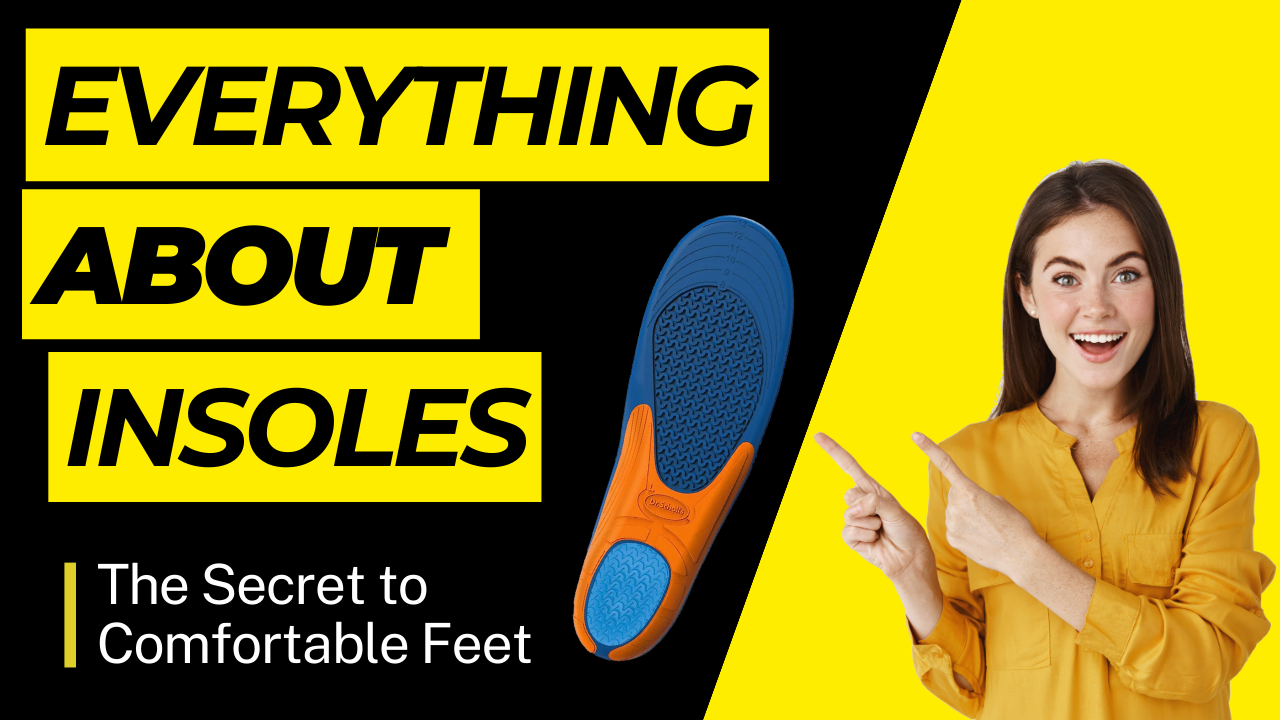Introduction
Insoles, often overlooked but crucial for foot health and comfort, can make a world of difference in your daily life. Whether you’re an athlete looking for improved performance, someone who spends long hours on their feet, or simply seeking relief from foot pain, insoles have a solution for you. In this comprehensive guide, we’ll delve into the world of insoles, exploring their types, benefits, and how to choose the perfect pair for your needs.
Table of Contents
Types of Insoles
1. Cushioning Insoles
They are excellent for individuals with high arches or those who engage in high-impact activities like running or basketball.
2. Arch Support Insoles
These insoles are specially crafted to offer support to individuals with flat feet or fallen arches. They help distribute weight evenly across the foot, reducing the risk of pain and discomfort.
3. Orthotic Insoles
Orthotic insoles are medically prescribed and tailored to address specific foot issues like plantar fasciitis or bunions. They provide customized support and are usually recommended by podiatrists.
4. Heat Moldable Insoles
These insoles can be heated and molded to the shape of your feet, ensuring a snug fit. They are suitable for anyone seeking personalized comfort.
Benefits of Using Insoles
1. Improved Comfort
Insoles provide extra cushioning and support, reducing pressure on the feet. This leads to improved overall comfort, especially during long periods of standing or walking.
2. Pain Relief
For individuals with foot conditions such as plantar fasciitis, insoles can alleviate pain by providing targeted support to problem areas.
3. Enhanced Performance
Athletes can benefit from insoles that enhance shock absorption and stability, resulting in improved performance and reduced risk of injury.
4. Better Posture
Insoles can help align your feet, which, in turn, promotes better posture and reduces strain on the knees and lower back.

Dr. Scholl’s Extra Support Insoles
Buy NowChoosing the Right Insoles
When selecting insoles, it’s crucial to consider your specific needs:
1. Foot Type
Identify your foot type – flat, high arch, or neutral – to choose the appropriate insole that suits your arch structure.
2. Activity Level
Consider your activity level. If you’re an athlete, prioritize insoles with superior shock absorption. For daily use, focus on comfort and support.
3. Foot Condition
If you have a foot condition, consult a podiatrist for recommendations on orthotic insoles that can address your specific issues.
How to Maintain Your Insoles
To ensure your insoles last longer and continue providing the support you need, follow these tips:
- Regularly clean and air out your insoles to prevent odor and bacterial growth.
- Replace insoles when they start showing signs of wear and loss of support.
- Store your insoles in a cool, dry place to prevent deterioration.
- Check the manufacturer’s recommendations for any specific care instructions.
Can insoles be washed:
Yes, insoles can typically be washed, but it depends on the type of insoles and the manufacturer’s recommendations. Most insoles made of foam or fabric materials can be hand-washed with mild soap and water. However, it’s essential to check the care instructions provided by the manufacturer, as some insoles may have specific cleaning guidelines. It’s a good practice to remove the insoles from your shoes before washing and allow them to air dry thoroughly before reinserting them to prevent odors and maintain their effectiveness.
Can insoles help knee pain:
Insoles can potentially help alleviate knee pain in some cases. Knee pain can often be related to improper alignment or overpronation of the feet, which can affect the way weight is distributed and absorbed by the knees. Arch support insoles or orthotic insoles, when properly chosen to address the specific needs of the individual, can help improve foot alignment. This, in turn, can lead to better overall body alignment and potentially reduce strain on the knees. However, it’s essential to consult a healthcare professional if you have persistent knee pain to determine the underlying cause and receive appropriate guidance.
Can insoles fix flat feet:
Insoles can provide support and help manage the symptoms associated with flat feet, but they may not “fix” flat feet entirely. Flat feet occur when the arches of the feet collapse, causing the entire sole of the foot to make contact with the ground. Arch support insoles or custom-made orthotic insoles can help provide the necessary support and cushioning for individuals with flat feet. While these insoles can improve comfort, reduce pain, and enhance stability, they may not permanently change the structure of the foot. In severe cases, medical intervention or physical therapy may be required.
Can insoles cause foot pain:
Insoles should not cause foot pain when used correctly. In fact, the primary purpose of insoles is to provide additional support, cushioning, and comfort to your feet. However, using improperly fitted or inappropriate insoles can potentially lead to discomfort or foot pain. It’s essential to choose insoles that match your foot type and needs. For example, using insoles with too much arch support for someone with high arches can lead to discomfort. Additionally, overuse or wearing insoles that have worn out can also contribute to foot pain. To prevent this, replace insoles as needed and ensure they are suited to your specific foot structure and activity level.
Can insoles help back pain:
Yes, insoles can help alleviate back pain in some cases. Properly selected insoles, such as those offering good arch support and alignment, can improve the posture and alignment of your feet. This improved alignment can help reduce strain on the lower back and potentially alleviate back pain. However, it’s crucial to remember that back pain can have various causes, and insoles may not be a standalone solution for all individuals with back pain. If you have persistent or severe back pain, it’s advisable to consult a healthcare professional to determine the root cause and receive appropriate treatment recommendations.
Are insoles FSA eligible:
Insoles can be FSA (Flexible Spending Account) eligible, but it depends on your specific FSA plan and the medical necessity of the insoles. FSA funds can typically be used for eligible medical expenses, and if a qualified medical professional prescribes or recommends insoles to address a specific medical condition, they may be considered eligible for reimbursement from your FSA. However, it’s essential to check with your FSA plan administrator and review their guidelines to confirm whether insoles are eligible under your plan.
Are insoles covered by insurance:
In some cases, health insurance plans may cover the cost of insoles, but it depends on your insurance provider, the type of plan you have, and the medical necessity of the insoles. If a qualified healthcare provider prescribes or recommends insoles as part of a treatment plan for a medical condition, there may be a chance that your insurance will cover the cost partially or in full. It’s crucial to contact your insurance provider and inquire about their coverage policies for insoles and whether any documentation or pre-authorization is required.
Are insoles worth it:
Whether insoles are worth it depends on your individual needs and circumstances. Insoles can be highly beneficial for individuals experiencing foot pain, discomfort, or specific foot conditions. They can provide extra cushioning, support, and alignment, which can lead to improved comfort, reduced pain, and enhanced stability. Athletes often use specialized insoles to enhance performance and reduce the risk of injury. However, whether they are worth it for you personally depends on your specific foot type, activity level, and any existing foot issues. It’s advisable to consult with a healthcare professional or a podiatrist to determine if insoles would be beneficial for your situation.
Are insoles bad for your feet:
Insoles themselves are not inherently bad for your feet. In fact, properly selected and fitted insoles can provide valuable support and comfort. However, using inappropriate or ill-fitting insoles can potentially lead to discomfort or foot issues. It’s essential to choose insoles that match your foot type and needs. Overusing or relying on insoles for extended periods without addressing underlying foot problems can also be counterproductive. Insoles should be seen as a tool to enhance comfort and support, not a long-term solution for serious foot issues. If you have concerns about using insoles, consult a podiatrist or healthcare professional for guidance.
Are insoles good for running:
Insoles can be beneficial for running, especially for individuals who want to improve comfort and reduce the risk of injury. Running can have a significant impact on the feet, and the right pair of running-specific insoles can provide extra cushioning, shock absorption, and support. They can help with issues like overpronation or underpronation, which can lead to foot and leg discomfort during running. However, it’s essential to choose insoles designed specifically for running and ensure they are appropriate for your foot type and running style. Some runners find custom-made orthotic insoles to be particularly effective in enhancing their running experience and reducing the risk of injuries.
How do Insoles Work:
Insoles, also known as shoe inserts or orthotics, are designed to provide additional support and cushioning to the feet inside shoes. They work in several ways:
Cushioning:
Insoles often have a layer of cushioning material (such as foam or gel) to absorb shock and reduce the impact on the feet when walking or running.
Arch Support:
Many insoles provide arch support to help maintain the natural arch of the foot, which can reduce strain on the arch and alleviate discomfort.
Alignment:
Some insoles are designed to align the feet, ensuring that they maintain proper positioning while walking or standing. This can help improve overall posture and reduce the risk of injury.
Pressure Distribution:
Insoles can distribute pressure more evenly across the foot, which can help reduce pain and discomfort in specific areas, such as the heel or ball of the foot.
Stability:
Insoles can enhance stability and balance by providing a firm base for the feet to rest on within the shoe.
How Insoles are Made:
Insoles are typically made using a combination of materials, including foam, gel, rubber, and plastic. The manufacturing process may involve the following steps:
Material Selection:
Different types of materials are chosen based on the intended purpose of the insole, such as providing cushioning or arch support.
Cutting and Shaping:
The selected material is cut and shaped into the desired insole design. This can be done manually or using automated machinery.
Assembly:
Some insoles consist of multiple layers or components that are assembled together. For example, a cushioned insole may have a foam layer on top of a firmer base.
Finishing:
The edges of the insole are usually smoothed and finished for comfort and aesthetics.
Customization:
Insoles can also be customized to fit an individual’s foot shape and arch by taking molds or scans of the feet and tailoring the insole accordingly.
How to Use Insoles:
To use insoles effectively, follow these steps:
Remove the existing insoles from your shoes if they are removable.
Place the insoles inside your shoes, ensuring they are properly aligned with the heel and the arch support matches your foot’s natural arch.
Wear the shoes with the insoles as you normally would. It’s essential to choose the right size of insoles to ensure a proper fit.
Monitor your comfort and make any necessary adjustments or replacements if you experience discomfort or wear and tear in the insoles.
How Insoles Help Flat Feet:
Insoles can help individuals with flat feet by providing arch support and redistributing pressure across the foot. Flat feet often lack a natural arch, leading to overpronation (excessive inward rolling of the feet). Insoles with arch support can help alleviate this by providing additional structure and helping the feet maintain a more neutral alignment.
How Insoles Help Plantar Fasciitis:
Plantar fasciitis is a condition characterized by inflammation and pain in the plantar fascia, a band of tissue that runs along the bottom of the foot. Insoles can help by:
Providing cushioning to reduce the impact on the heel.
Supporting the arch can reduce strain on the plantar fascia.
Distributing pressure evenly can alleviate pain in the affected area.
Promoting proper foot alignment, and reducing tension on the plantar fascia.
It’s important to note that the effectiveness of insoles may vary depending on the individual’s specific foot condition and the quality of the insoles used. Consulting with a podiatrist or a medical professional can help determine the best type of insoles for your needs.
What Insoles Do I Need:
The type of insoles you need depends on your specific foot condition, activity level, and comfort preferences. Here are some common scenarios:
Flat Feet: If you have flat feet, you’ll benefit from insoles with good arch support to help maintain proper foot alignment.
High Arches: Individuals with high arches may require cushioned insoles to provide additional shock absorption and reduce pressure on the arch.
Plantar Fasciitis: If you have plantar fasciitis, look for insoles with ample cushioning and arch support to alleviate heel pain and reduce stress on the plantar fascia.
Athletic Activities: For sports and physical activities, consider specialized athletic insoles that offer enhanced support, stability, and moisture-wicking properties.
Medical Conditions: If you have a specific medical condition or foot problem, it’s advisable to consult with a podiatrist or medical professional for personalized recommendations.
What Insoles Do NBA Players Use:
NBA players often use custom-made orthotic insoles tailored to their specific needs. These insoles are designed to address any foot-related issues, provide optimal support, and enhance performance. While some players may use off-the-shelf insoles, custom-made ones are more common at the professional level.
What Insoles Are Good for Flat Feet:
Insoles suitable for flat feet typically offer strong arch support. Look for insoles with features like:
- Firm arch support to help lift and maintain the arch.Cushioning to provide comfort and absorb shock.A contoured shape that matches the natural arch of the foot. Pronation control to correct overpronation
- Materials that provide durability and moisture-wicking properties.

What Insoles Do Doctors Recommend:
Doctors, particularly podiatrists or orthopedic specialists, may recommend various types of insoles depending on the patient’s needs. These recommendations often involve custom-made orthotic insoles, as they can be tailored to address specific foot issues. Custom insoles are crafted based on a patient’s foot shape, gait, and medical condition. Over-the-counter insoles may also be recommended for milder cases or general comfort. Doctors will consider factors such as arch height, pronation, and the presence of any medical conditions when making recommendations.
What Insoles Are Good for Pain Relief:
Insoles can provide pain relief for various foot-related issues, including plantar fasciitis, heel pain, and general foot discomfort. For pain relief, consider insoles with the following features:
- Excellent cushioning to reduce impact and pressure on sensitive areas.Arch support to distribute weight more evenly and alleviate strain.Proper alignment support to improve posture and reduce pain associated with misalignment.Moisture-wicking materials to keep feet dry and prevent discomfort.Shock-absorbing properties to reduce pain during activities like walking or running.
Insoles When Shoes Are Too Big:
Insoles can be a helpful solution when your shoes are slightly too big. They can fill the extra space inside the shoe, preventing your feet from sliding around and improving the fit. Here’s how to use insoles for this purpose:
Choose a thin, cushioned insole that won’t take up too much space inside the shoe.
Insert the insoles into your shoes, positioning them towards the front to provide better support for the ball of your foot.
Test the fit to ensure your feet feel more secure and comfortable.
When Were Insoles Invented:
Insoles, also known as shoe inserts or footbeds, have been used for centuries in various forms. The earliest versions were simple pieces of leather or fabric placed inside shoes for added comfort. The modern concept of insoles with advanced materials and features has evolved over time, with innovations in orthopedics and shoe technology. The exact date of their invention is challenging to pinpoint, but insoles have a long history of adaptation and development.
When to Replace Insoles:
The lifespan of insoles depends on factors like their material, usage, and the wearer’s activity level. Here are some signs indicating it’s time to replace your insoles:
Visible wear and tear, such as fraying, cracking, or flattening of cushioning.
Reduced support or comfort, as insoles lose their effectiveness over time.
Unpleasant odors that persist despite cleaning.
If you’ve been using the insoles for a specific medical condition, follow your healthcare provider’s recommendations for replacement.
When to Use Insoles:
You can use insoles in various situations, depending on your needs:
Daily Wear: Insoles can enhance the comfort and support of your everyday shoes, improving your overall foot health.
Athletic Activities: Many athletes use specialized insoles to enhance performance, provide better cushioning, and reduce the risk of injuries.
Medical Conditions: If you have foot problems like flat feet, plantar fasciitis, or bunions, insoles prescribed by a healthcare professional can provide relief and support.
Work Shoes: People who stand or walk for extended periods at work can benefit from insoles to reduce fatigue and discomfort.
When to Replace Insoles in Running Shoes:
Insoles in running shoes tend to wear out faster than in everyday shoes due to the higher impact and stress associated with running. Here’s when to consider replacing insoles in your running shoes:Mileage: High-quality insoles designed for running can typically last between 300 to 500 miles (482 to 805 kilometers) of running. Keep track of your mileage to determine when replacement is needed. Visible Wear: Inspect the insoles for signs of wear, such as flattened cushioning or visible damage. If you notice these issues, it’s time to replace them.
- Reduced Comfort: If you experience discomfort or reduced support while running, even if the insoles appear visually fine, it may be a sign that they’ve lost their effectiveness.
Where to Buy Insoles for Shoes:
You can purchase shoe insoles from various retail locations, both in-store and online. Here are some common places where you can buy insoles:
Footwear Stores:
Specialty footwear stores, including those that focus on comfort, orthopedics, or athletic shoes, often carry a wide selection of insoles. Visiting a physical store allows you to try different options and receive expert guidance from store staff.
Drugstores and Pharmacies:
Many drugstores and pharmacies stock over-the-counter insoles. They may offer basic insoles for general comfort or those designed for specific purposes like arch support or cushioning.
Sporting Goods Stores:
Sporting goods retailers typically carry athletic insoles designed for specific sports or activities. These insoles are engineered to provide support and improve performance.
Online Retailers:
Several online marketplaces and dedicated websites offer a vast array of insoles for various needs. Popular online platforms include Amazon, eBay, Zappos, and specialty websites that focus on foot health and comfort products.
Click Here ( BUY NOW )Shoe Brands’ Official Websites:
Some shoe brands offer their own insoles as accessories, which you can purchase through their official websites.
Orthopedic Clinics:
If you require custom orthotic insoles tailored to your specific foot shape and needs, you may need to visit an orthopedic clinic or podiatrist. They will take molds or scans of your feet to create custom insoles.
Where Are Insoles Sold:
Insoles are sold in a variety of retail outlets, including:
Physical stores such as footwear shops, shoe departments in department stores, and specialized orthopedic stores.
Online retailers offer a vast selection and the convenience of shopping from home.
Health and wellness stores that carry foot care products.
Some supermarkets and big-box retailers may also have a limited selection of basic insoles.
CLICK HERE ( BUY INSOLES )Insoles Where to Buy:
If you’re looking to purchase insoles, you have several options for where to buy them. Here’s a summary of where you can find insoles:
In physical stores: Visit footwear stores, pharmacies, drugstores, sporting goods stores, and orthopedic clinics.
Online: Explore online retailers, including general marketplaces and specialized websites.
Official brand websites: Check if the brand of your shoes offers compatible insoles on their official website.
Healthcare professionals: If you need custom orthotic insoles, consult with a podiatrist or orthopedic specialist, who can provide tailored solutions.
When buying insoles, consider your specific needs, such as arch support, cushioning, or medical conditions. It’s often beneficial to try on insoles or seek professional advice to ensure you select the right ones for your comfort and foot health.
BUY NOW ( MILLION’S OF INSOLES )Which Insoles for Plantar Fasciitis:
Insoles for plantar fasciitis should provide ample arch support and cushioning to alleviate pain and reduce strain on the plantar fascia. Some popular options include:
- Superfeet Green Insoles: These are known for their strong arch support and durability.
- Powerstep Pinnacle Insoles: They offer good arch support and cushioning for plantar fasciitis relief.
- Dr. Scholl’s Pain Relief Orthotics for Plantar Fasciitis: These affordable insoles provide cushioning and arch support.
Which Insoles Are the Best:
The “best” insoles depend on individual needs and foot conditions. What works well for one person may not be suitable for another. To find the best insoles, consider the following factors:
- Foot condition: Choose insoles designed to address your specific issue, such as flat feet, high arches, or plantar fasciitis.Comfort: Look for insoles with cushioning and support that feel comfortable to you.
- Activity level: Consider whether you need insoles for everyday wear, sports, or work.Material and quality: High-quality insoles made from durable materials tend to last longer.
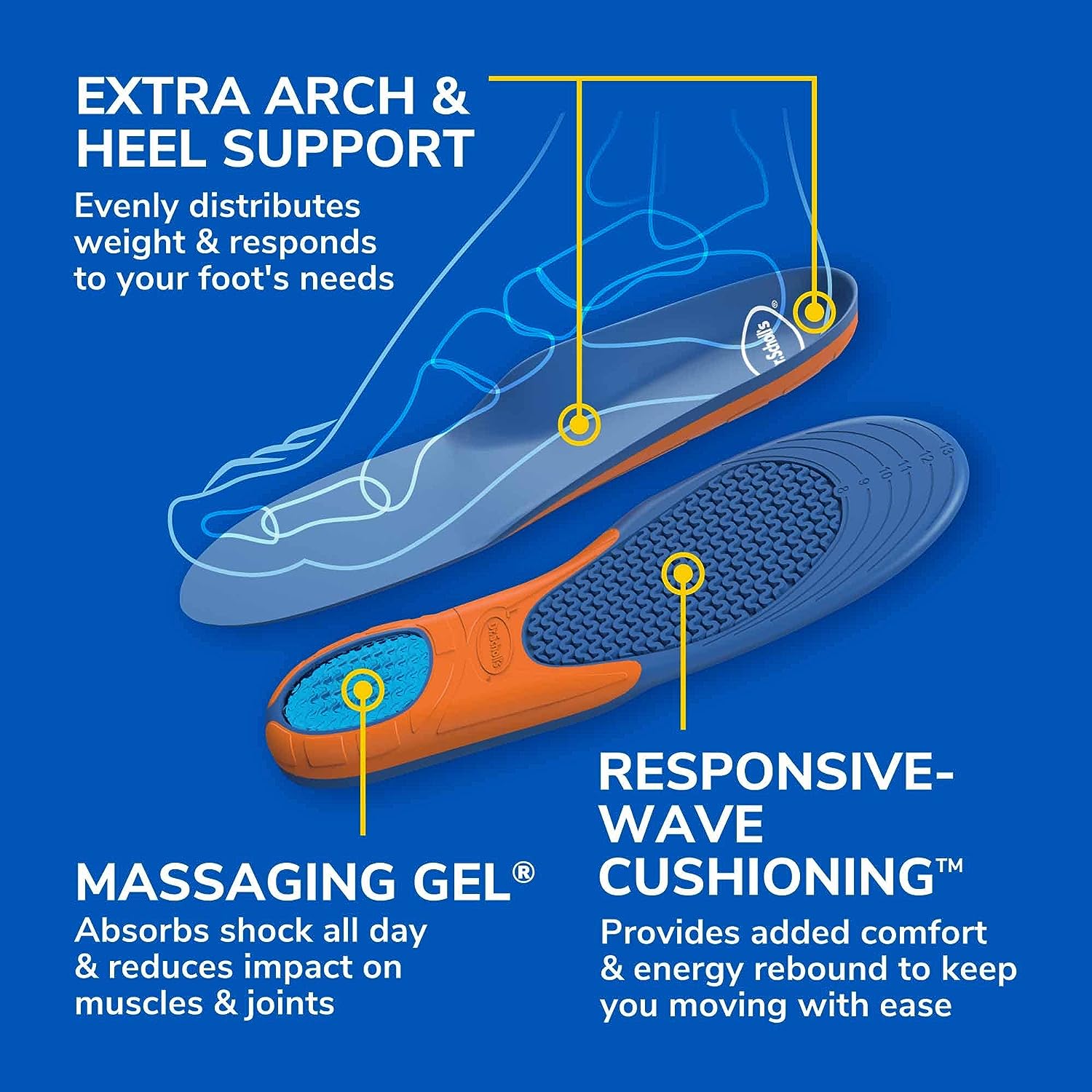
Which Insoles Do Podiatrists Recommend:
Podiatrists often recommend custom orthotic insoles that are tailored to a patient’s individual foot shape, gait, and specific needs. These insoles are crafted after a thorough evaluation of the patient’s condition. However, for over-the-counter options, podiatrists may recommend well-known brands like Superfeet, Powerstep, or Spenco, depending on the patient’s condition.
Which Insoles for Flat Feet:
Insoles for flat feet should provide strong arch support to help lift and maintain the arch. Some good options include:
Superfeet Blue or Green Insoles: These provide firm arch support and are suitable for flat feet.
Powerstep Pinnacle Maxx Insoles: Known for their cushioning and arch support, they are suitable for flat feet.
Orthotics prescribed by a podiatrist: Custom orthotic insoles are the best option for severe cases of flat feet, as they are tailored to your specific needs.
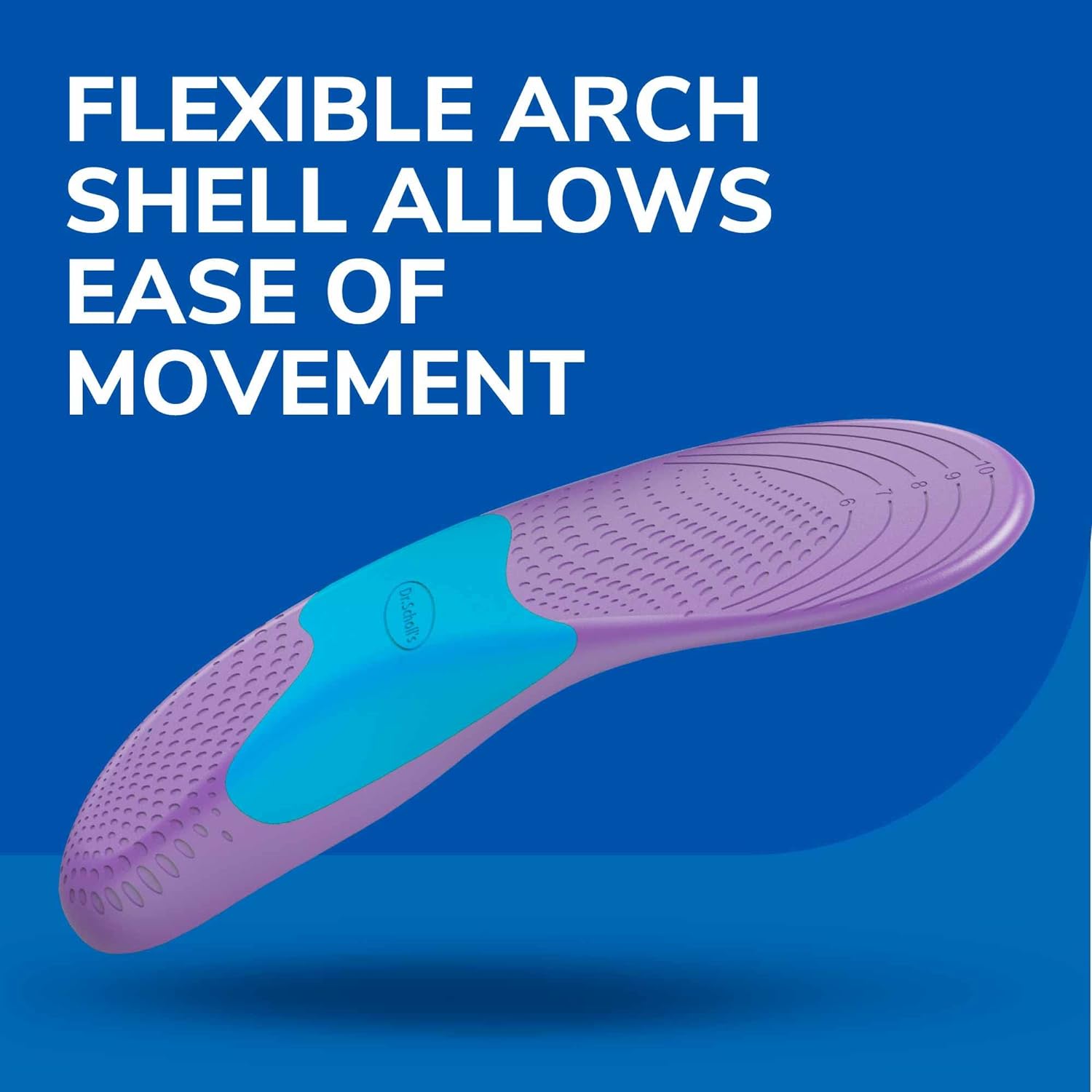
Which Insoles Do I Need:
To determine which insoles you need, consider your foot condition, activity level, and comfort preferences. If you have a specific medical condition or discomfort, consult with a podiatrist or healthcare professional for personalized recommendations. They can assess your feet, gait, and any existing problems to guide you toward the most suitable insoles. Over-the-counter insoles can be a good starting point for general comfort and support, but custom orthotic insoles may be necessary for more severe issues.
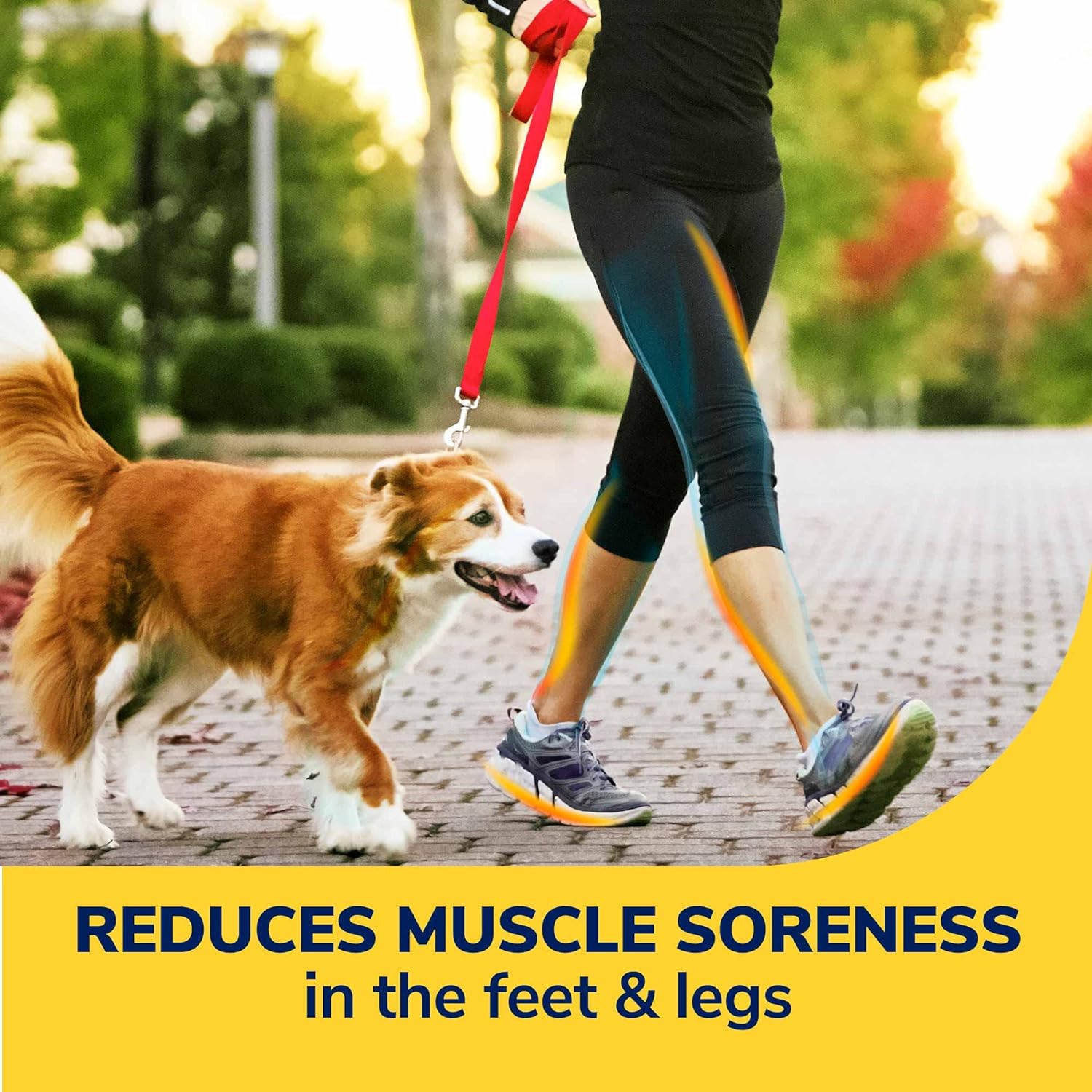
Who Invented Insoles:
The concept of insoles, also known as shoe inserts or footbeds, has a long history, and it is challenging to attribute their invention to a single individual. Insoles, in various forms, have likely been used for centuries to improve comfort and support in footwear. Over time, the design and materials used in insoles have evolved, with contributions from orthopedists, shoemakers, and footwear innovators.
Who Makes Insoles:
Insoles are made by various manufacturers, including:
Specialized Insole Brands: Companies such as Superfeet, Powerstep, Spenco, and Dr. Scholl’s specialize in manufacturing a wide range of insoles for various foot conditions and needs.
Shoe Brands: Many shoe brands produce their own insoles designed to fit their footwear. These insoles are often available for purchase separately.
Orthopedic Clinics: Custom orthotic insoles are crafted by orthopedic specialists and podiatrists for individuals with specific foot conditions.
Who Sells Insoles:
Insoles are sold by a wide range of retailers, including:
Footwear Stores: Specialty footwear shops often carry a selection of insoles suitable for different shoe types and foot conditions.
Pharmacies and Drugstores: Over-the-counter insoles for general comfort are commonly available in these stores.
Sporting Goods Stores: Retailers specializing in sports equipment typically stock athletic insoles designed for various sports and activities.
Online Retailers: Websites like Amazon, Zappos, and eBay offer a vast array of insoles for online purchases.
Health and Wellness Stores: Some stores focusing on health and wellness products may carry insoles designed for foot comfort and support.
Click Here ( BUY NOW )Who Prescribes Insoles:
Insoles, especially custom orthotic insoles, are typically prescribed by healthcare professionals, including:
Podiatrists: Podiatrists are foot and ankle specialists who can assess your feet, diagnose conditions, and prescribe custom orthotic insoles tailored to your specific needs.
Orthopedic Specialists: Orthopedic doctors or surgeons who specialize in musculoskeletal issues may also prescribe insoles, especially if the problem is related to your overall musculoskeletal health.
Physical Therapists: Physical therapists may recommend insoles as part of a treatment plan to address biomechanical issues and alleviate pain.
Who Makes Insoles for Shoes:
Insoles designed for specific shoe brands are typically manufactured by the shoe companies themselves. These insoles are created to complement their footwear, ensuring a proper fit and enhanced comfort. For example, if you have a pair of Nike shoes, Nike may produce corresponding insoles that fit those shoes perfectly.
Who Sells Insoles for Shoes:
Insoles designed for specific shoe brands are commonly available at:
Official Brand Stores: You can find compatible insoles at brand-specific retail stores or on their official websites.
Authorized Retailers: Many shoe stores that carry a particular brand’s footwear may also offer the corresponding insoles.
Online Retailers: Insoles designed for specific shoe brands can often be purchased online through brand websites or authorized online retailers.
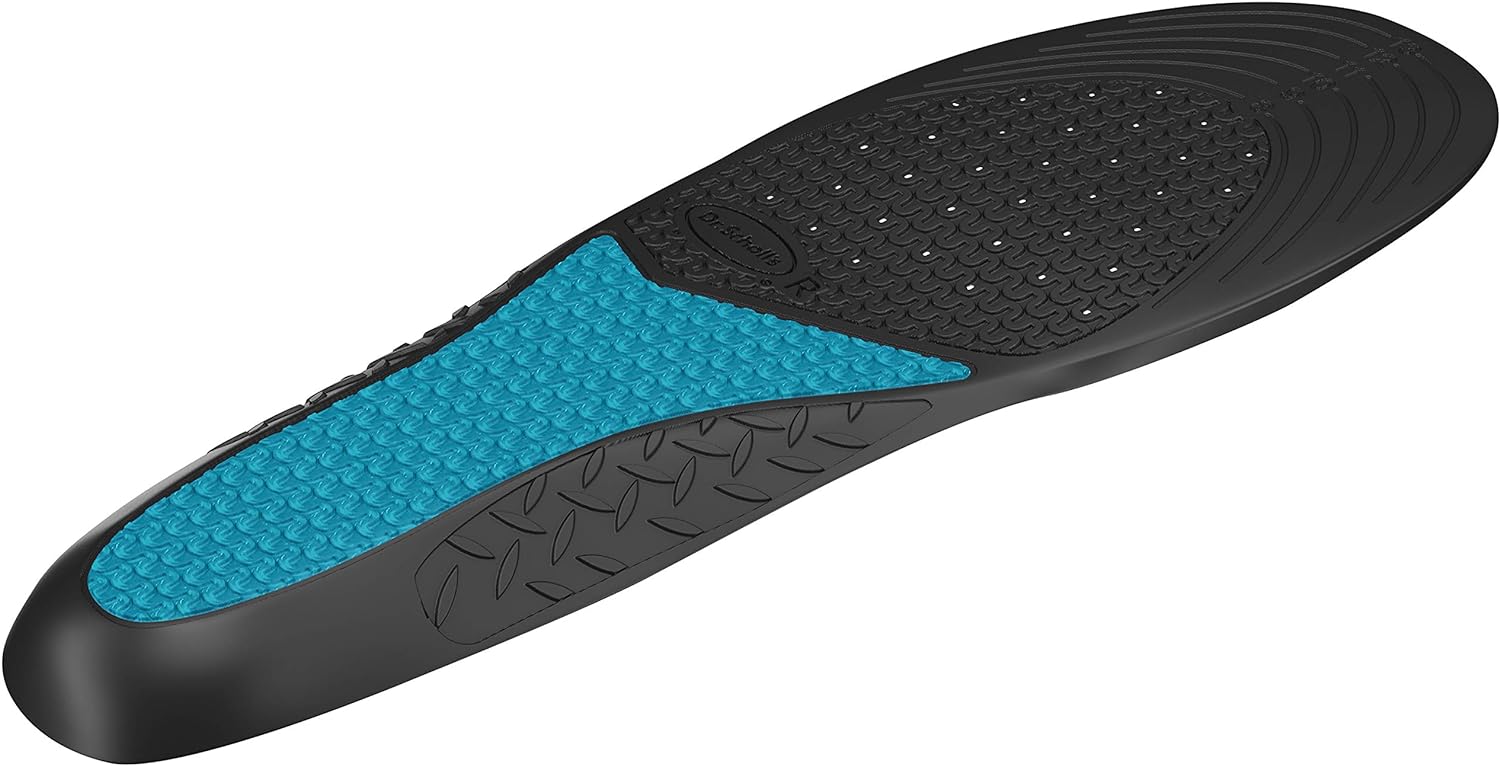
Why Wear Insoles:
People wear insoles for several reasons, including:
Comfort: Insoles can provide additional cushioning and support, making shoes more comfortable, especially for extended periods of standing or walking.
Foot Health: Insoles can help alleviate foot pain and discomfort associated with conditions like plantar fasciitis, flat feet, or high arches.
Injury Prevention: Insoles can enhance stability and reduce the risk of injuries by providing proper arch support and alignment.
Performance: Athletes often use specialized insoles to improve performance, reduce fatigue, and prevent overpronation or supination during sports activities.
Why Are Insoles Important:
Insoles are important because they contribute to foot health and overall well-being by:
Providing support to the arches and feet.
Absorbing shock and reducing impact during walking or physical activities.
Maintaining proper alignment of the feet, can impact posture and help prevent injuries.
Alleviating pain and discomfort associated with various foot conditions.

Why Are Insoles So Expensive:
Insoles can vary in price, and the cost is influenced by several factors:
Materials: High-quality materials and advanced technologies used in insoles can drive up the price.
Customization: Custom orthotic insoles, made specifically for an individual’s feet, are more expensive due to the specialized manufacturing process.
Brand Reputation: Established brands with a reputation for producing effective insoles may charge higher prices.
Research and Development: Investment in research, development, and testing of insole designs can increase production costs.
Specialized Features: Insoles with advanced features, such as pressure mapping or motion analysis, may be pricier.
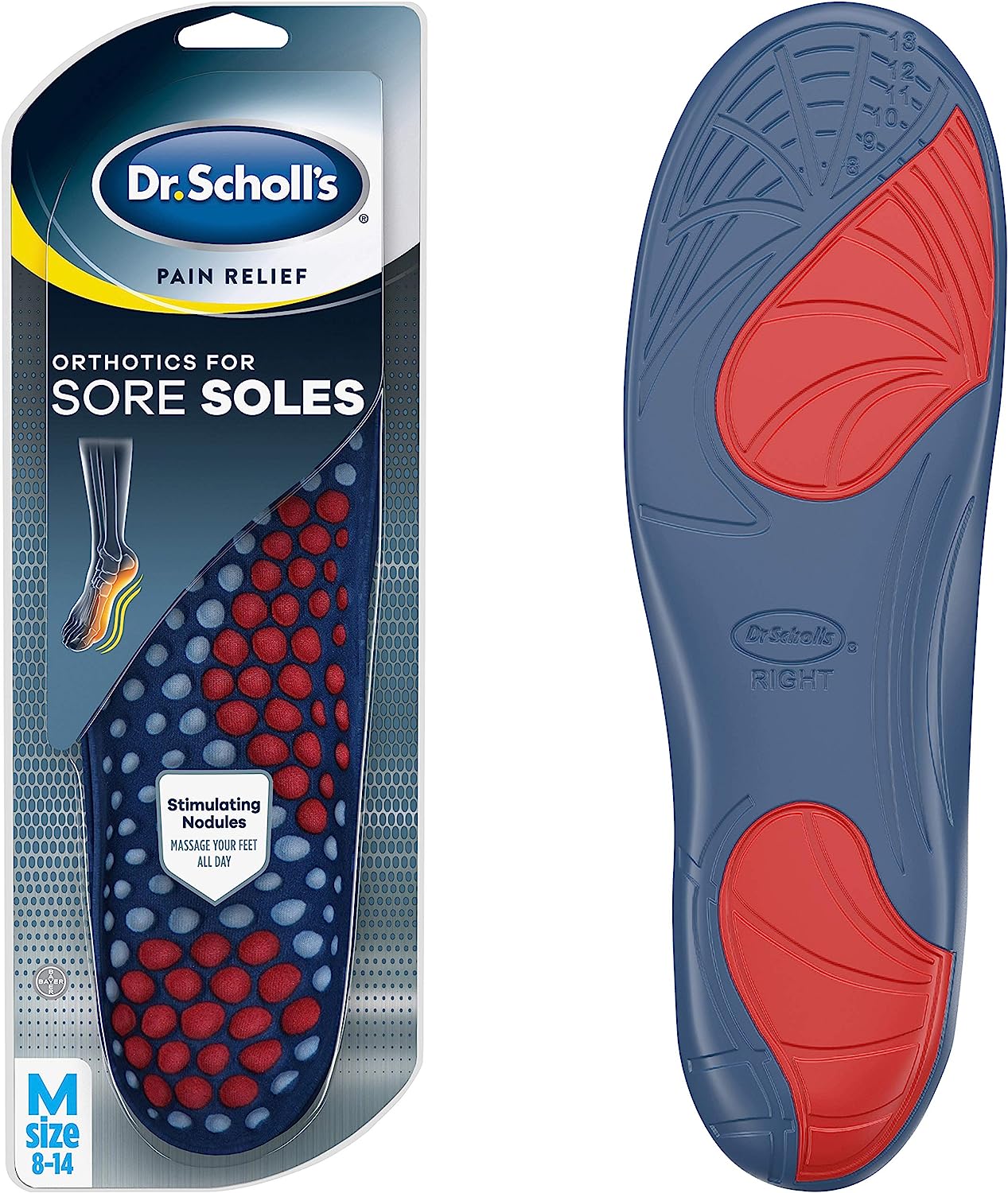
Why Do Insoles Hurt My Foot:
Insoles may cause discomfort or pain for several reasons:
Improper Fit: If the insoles do not match the contours of your feet or shoes, they can create pressure points and cause discomfort.
Inadequate Break-In Period: Some insoles may require an adjustment period for your feet to adapt to them. Initially, they may feel uncomfortable.
Incorrect Type: Using insoles not suited to your foot condition or activity level can lead to discomfort.
Worn-Out Insoles: Old or damaged insoles may no longer provide the support and cushioning they once did, leading to discomfort. If insoles consistently hurt your feet, it’s essential to reassess their fit and suitability. Custom orthotic insoles prescribed by a podiatrist may be necessary if you have specific foot issues.
Why Insoles Are Good for You:
Insoles can be beneficial for several reasons:
Improved Comfort: Insoles can make shoes more comfortable, reducing fatigue and discomfort.
Pain Relief: They can alleviate foot pain associated with conditions like plantar fasciitis, flat feet, or bunions.
Injury Prevention: Insoles provide support and stability, reducing the risk of injuries during physical activities.
Enhanced Performance: Athletes can use specialized insoles to improve their performance and reduce the risk of overuse injuries.
Why Insoles Are Bad:
Insoles are generally considered beneficial, but there are situations where they may not be ideal:
- Poor Fit: Ill-fitting insoles can create discomfort and even exacerbate foot problems.
- Masking Underlying Issues: Using insoles to mask pain without addressing the root cause of the problem may lead to delayed treatment.
- Inappropriate Use: Using insoles not designed for your specific needs or using them in the wrong type of shoes can be counterproductive.
Will Insoles Help Heel Pain:
Yes, insoles can help alleviate heel pain, especially when caused by conditions like plantar fasciitis or heel spurs. Insoles designed for heel pain typically provide extra cushioning and arch support, which can reduce pressure on the heel and the plantar fascia. They can also promote proper foot alignment, which is crucial for managing heel pain.

Will Insoles Help with a Runner’s Knee:
Insoles can be part of a comprehensive approach to managing a runner’s knee (patellofemoral pain syndrome). Insoles designed to address overpronation (excessive inward foot rolling) can help distribute the load more evenly across the knee joint, potentially reducing stress and pain. However, insoles alone may not be sufficient for treating a runner’s knee, and it’s important to combine them with proper running form, strength exercises, and rest as needed.
Will Insoles Stop Shin Splints:
Insoles can provide relief from shin splints by reducing the impact and pressure on the shins. They may help distribute the shock more evenly throughout the foot, reducing the strain on the shin muscles. However, the effectiveness of insoles may vary from person to person, and addressing shin splints may also require rest, ice, and specific exercises to strengthen the lower leg muscles.
Will Insoles Help Ankle Pain:
Insoles can be beneficial for ankle pain, particularly when it’s related to issues with foot alignment or arch support. Insoles designed to provide proper arch support can help maintain a neutral foot position, which can reduce strain on the ankles. However, the cause of ankle pain varies, so it’s essential to identify and address the underlying issue. Consult with a healthcare professional for a proper diagnosis and treatment plan.
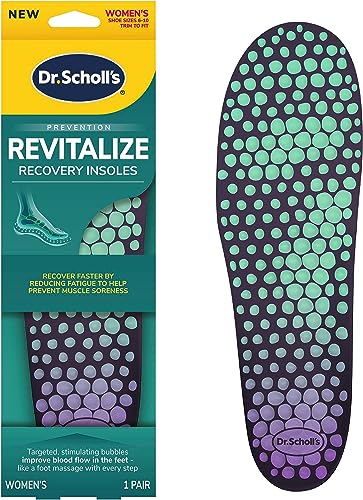
Will Insoles Help Knee Pain:
Insoles can help alleviate knee pain in certain cases, especially when the pain is related to poor foot alignment or overpronation. Insoles designed to correct biomechanical issues can improve foot and leg alignment, reducing stress on the knee joint. However, the effectiveness of insoles for knee pain depends on the cause and severity of the pain. It’s advisable to consult with a healthcare professional for a comprehensive evaluation and treatment plan for knee pain.
Insoles can be a valuable part of managing foot, ankle, and knee pain, but their effectiveness depends on the specific condition and the individual. They should be used as part of a broader treatment plan, which may include rest, exercises, and professional guidance for optimal results.
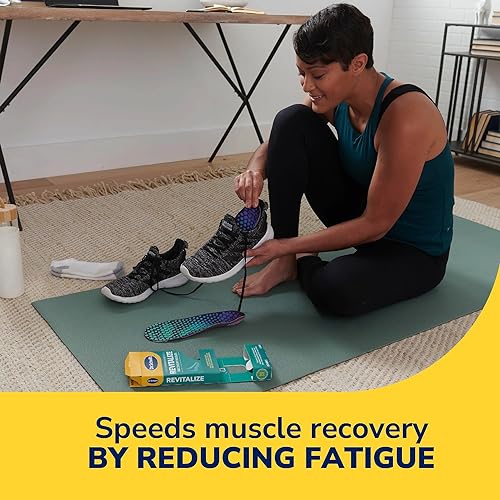
Athletic Potential with VKTRY Insoles: Boost Performance and Prevent Injuries
In the fast-paced world of sports and athletics, every advantage counts. Athletes are constantly seeking ways to enhance their performance while safeguarding themselves from injuries. This quest has led to the development of innovative products like VKTRY insoles, which have been making waves in the athletic community. In this article, we will dive deep into VKTRY insoles, exploring their benefits, technology, and impact on athletic performance.
Understanding VKTRY Insoles: A Game-Changing Innovation
VKTRY insoles are a revolutionary advancement in the world of sports equipment. These insoles are not your ordinary shoe inserts; they are designed to provide athletes with a competitive edge like never before. Let’s take a closer look at what sets VKTRY insoles apart.
1. The Science Behind VKTRY Insoles
VKTRY insoles are meticulously crafted using a unique carbon fiber material that stores and returns energy. This cutting-edge technology enables athletes to harness additional power with every step they take.
2. Boosting Athletic Performance
One of the primary benefits of VKTRY insoles is their ability to enhance athletic performance. Whether you’re a professional athlete or a weekend warrior, these insoles can help you run faster, jump higher, and perform better in your chosen sport.
3. Injury Prevention
Injuries are an athlete’s worst nightmare. VKTRY insoles provide added support and cushioning, reducing the risk of common injuries like shin splints and stress fractures. They offer a preventive measure to keep you in the game.
4. Customization for Individual Athletes
VKTRY understands that every athlete is unique. That’s why they offer customization options for their insoles. Each pair is tailored to an athlete’s specific needs, ensuring a perfect fit and maximum benefits.
5. Suitable for Various Sports
Whether you’re a basketball player, a sprinter, or a long-distance runner, VKTRY insoles are versatile and suitable for a wide range of sports. Their adaptability makes them a valuable addition to any athlete’s gear.
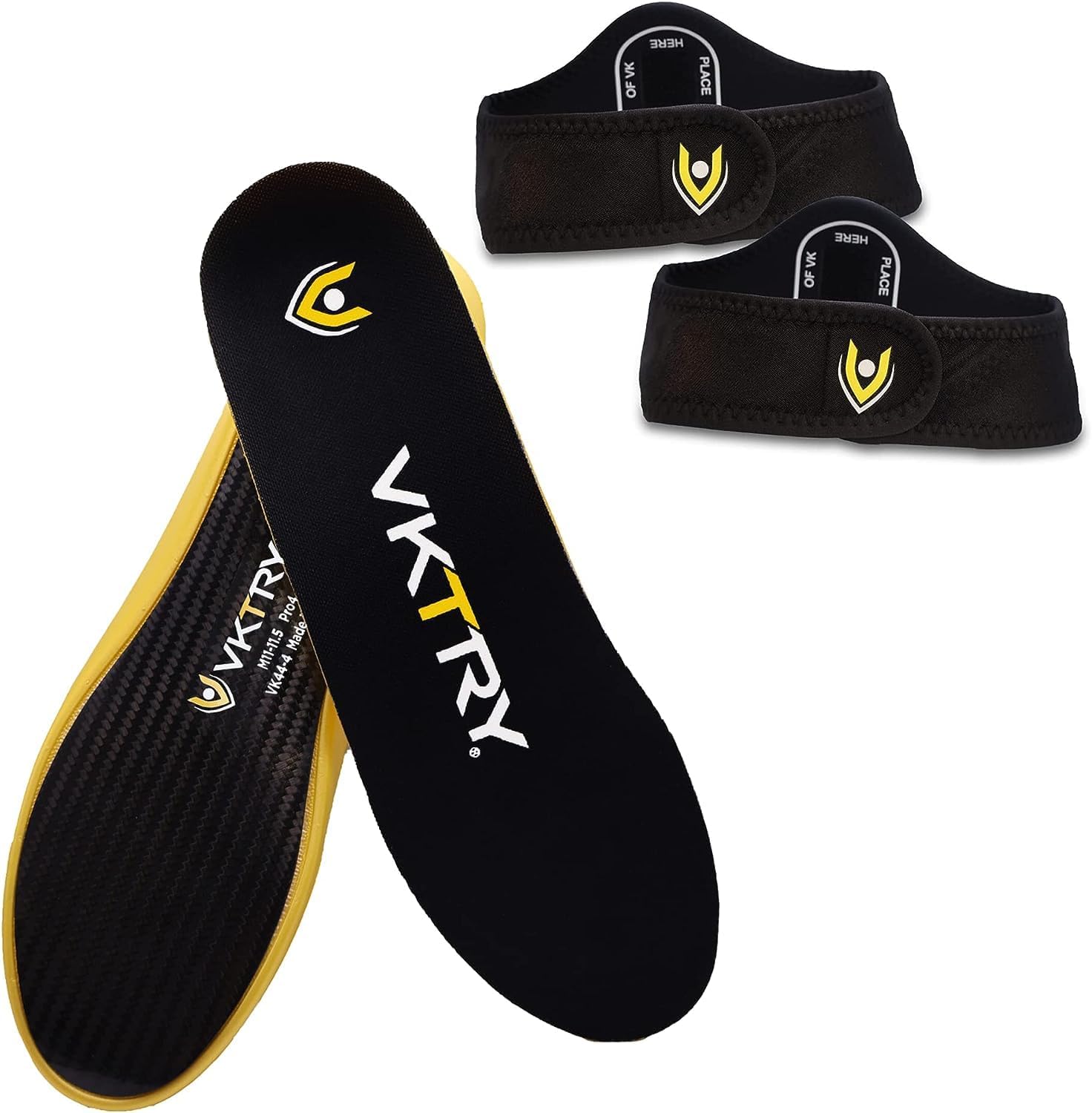
Real-World Results: Success Stories
1. Elite Athletes Embrace VKTRY
Many elite athletes have integrated VKTRY insoles into their training regimens, reporting significant improvements in performance. From NFL players to track and field stars, the success stories are impressive.
2. Improved Vertical Leap
For basketball players, increasing their vertical leap can be a game-changer. VKTRY insoles have been shown to provide the extra boost needed to slam dunk or block an opponent’s shot.
3. Marathoners Go the Distance
Long-distance runners have also benefited from VKTRY insoles. The energy return technology helps them maintain pace and reduce fatigue during grueling races.
VKTRY Insoles:
User Testimonials
1. Sarah’s Story
“I used to struggle with shin splints during track season. Since I started using VKTRY insoles, I haven’t had any issues. Plus, my sprint times have improved significantly.”
2. John’s Journey
“As an avid weightlifter, I was looking for ways to enhance my powerlifting performance. VKTRY insoles have given me the extra push I needed to break personal records.”
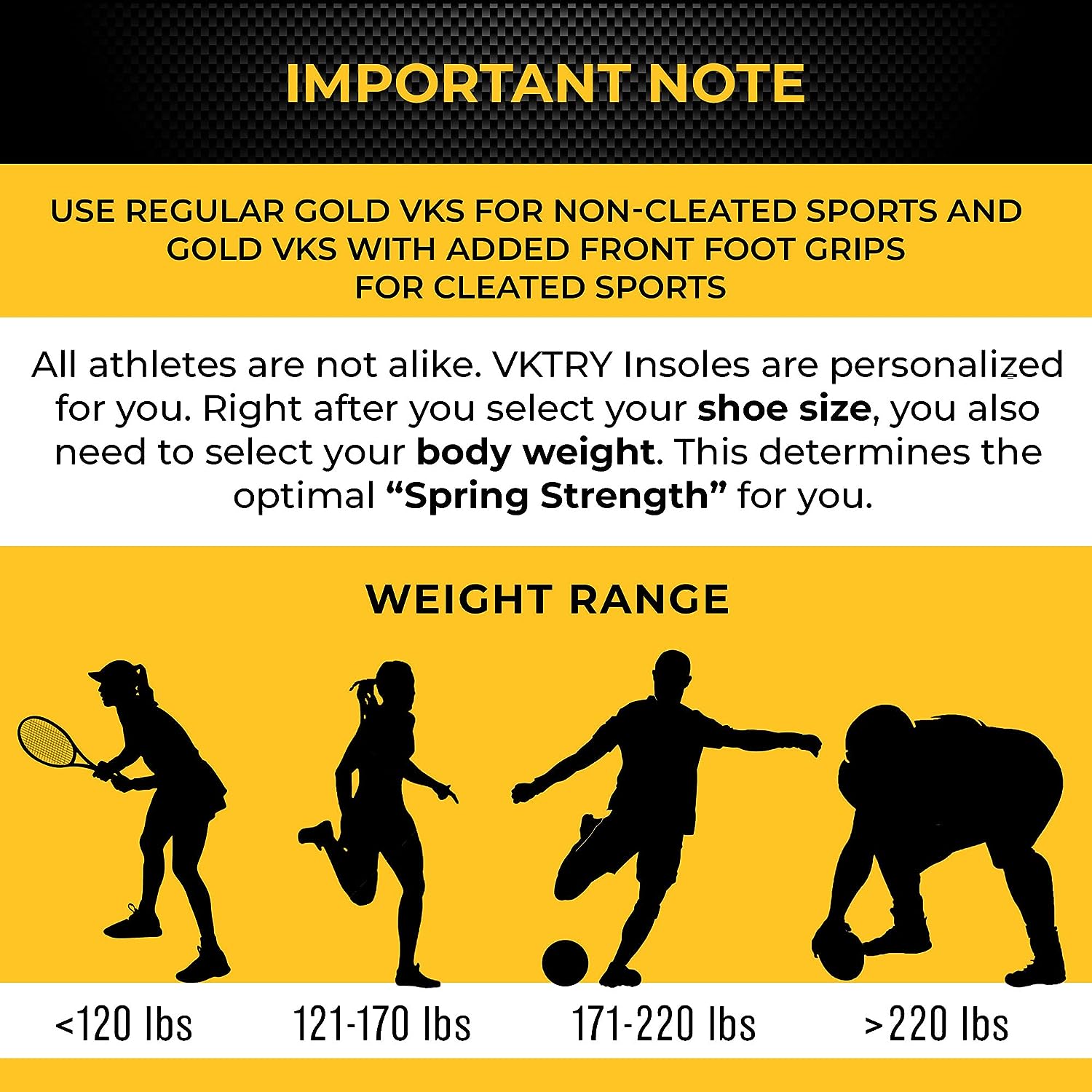
Conclusion:
Elevate Your Game with VKTRY Insoles
In the competitive world of sports, VKTRY insoles have emerged as a game-changing innovation. With their cutting-edge technology, ability to boost performance, and proven injury prevention benefits, these insoles are a must-have for athletes of all levels. Whether you’re a seasoned pro or just starting your athletic journey, VKTRY insoles can help you unleash your full potential and reach new heights in your sport.
FAQs
1. Are VKTRY insoles suitable for all shoe types?
Yes, VKTRY insoles can be customized to fit various shoe types, including sneakers, cleats, and running shoes.
2. How long do VKTRY insoles last?
VKTRY insoles are designed to be durable and long-lasting. With proper care, they can provide support and performance benefits for a year or more.
3. Can VKTRY insoles be used by non-athletes?
Absolutely! While VKTRY insoles are popular among athletes, anyone looking for added comfort and support in their shoes can benefit from them.
4. Do VKTRY insoles require any special maintenance?
VKTRY insoles are low-maintenance. Simply remove them from your shoes when not in use, and they will continue to provide the desired benefits.
5. Where can I get VKTRY insoles?
You can get access to VKTRY insoles and experience their benefits by visiting this link. Don’t miss the opportunity to enhance your athletic performance and reduce the risk of injuries with VKTRY insoles.


